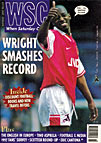 Brazil and Japan's recent international friendly was less about football and more about a chance to promote a well-known sports brand, says Sam Wallace
Brazil and Japan's recent international friendly was less about football and more about a chance to promote a well-known sports brand, says Sam Wallace
The ‘summer tour’ is normally associated with a gentle amble through the locals’ defence in a country otherwise too hot to play football. West Bromwich Albion once made it to China, only for Bryan Robson to muse that he’d rather they’d gone somewhere warmer. More recently Manchester United visited post-apartheid South Africa, where Ryan Giggs identified the clement weather as the highlight rather than the fact that he was met (and recognized) by Nelson Mandela.
No doubt Ronaldo, Leonardo, Juninho and Roberto Carlos were equally baffled to be packed off on a ‘World Tour’ of South Korea and Japan as domestic seasons kicked off all over Europe. In recent years Japan’s J-League has suffered consistently falling attendances and its season’s second stage begins under the shadow of the immensely popular televised National High School Baseball Championships. Though the World Cup arrives in 2002, relations with co-host South Korea remain strained. But the Brazilians’ jaunt across the East appeared to have less to do with cordial international relations than with big business. Our hosts for the night were not the Japanese Football Association but Nike, sponsors of the Brazilian national team.
The match programme, presented in a folder, was similar to those glossy prospectuses which normally concern themselves with oil prices or graduate recruitment. Attacks on football’s cosy relationship with commerce are tediously common in Britain, but here was a genuinely inspired ploy: sell football to the Japanese through the allure of their first love, business.
There were other equally ingenious freebies (the programme cost £50): ‘face paint stickers’ of the Japanese flag, Brazilian flag and naturally, the Nike logo.
Of course, none of this detracted from a first half of leisurely Brazilian excellence which finished with them 1-0 up. The Japanese team had rather unsportingly turned up in an Adidas strip, but their inferiority only served to prove the folly of choosing the wrong kit manufacturer.
On the half-time whistle the stadium lights went out and from one corner emerged what appeared to be an enormous rolling Christmas decoration. Stopping in the centre circle, it disgorged a rubber-clad figure who might have been mistaken for a Star Wars foot soldier had it not been for the unmistakable logo on his chest. Spotlit and accompanied by booming music he exhorted the crowd into manic hand clapping before dispatching a couple of footballs into their midst.
Much to my alarm he was then passed what can only be described as a rocket launcher. His ammunition, though, was rolled up T-shirts, sent on trajectories as harmless and inaccurate as most of Japan’s first half attacks.
Muted and slightly dutiful enthusiasm for Nike’s benevolence permeated the whole event. From the improbably named ‘Ultras Nippon’ in the North Stand (their banner adorned with the Nike crest) to the strange sight of Ronaldo ‘practising’ his heading in front of an eager press, no-one seemed entirely sure what was expected of them. Only Nike, it appeared, were certain of anything: that it was them who should be thanked for making all this possible.
The game finished 3-0 to Brazil, doubly disappointing given the more slender margin of victory (2-1) in South Korea. It could, however, be argued that the Japanese crowd had been subjected to a display of tactical marketing more glitzy and more thorough than anything the Brazilians could put together. In the match programme Nike promised to “grow new traditions (in their ‘partnership with Brazil) while honouring the old”. Try telling that to the bloke in rubber running round the pitch with a gun.
And anyway, for my money Nike were trumped on the best advertising ploy of the day: wearing the number seven shirt for Japan was a midfielder called Honda.
From WSC 128 October 1997. What was happening this month